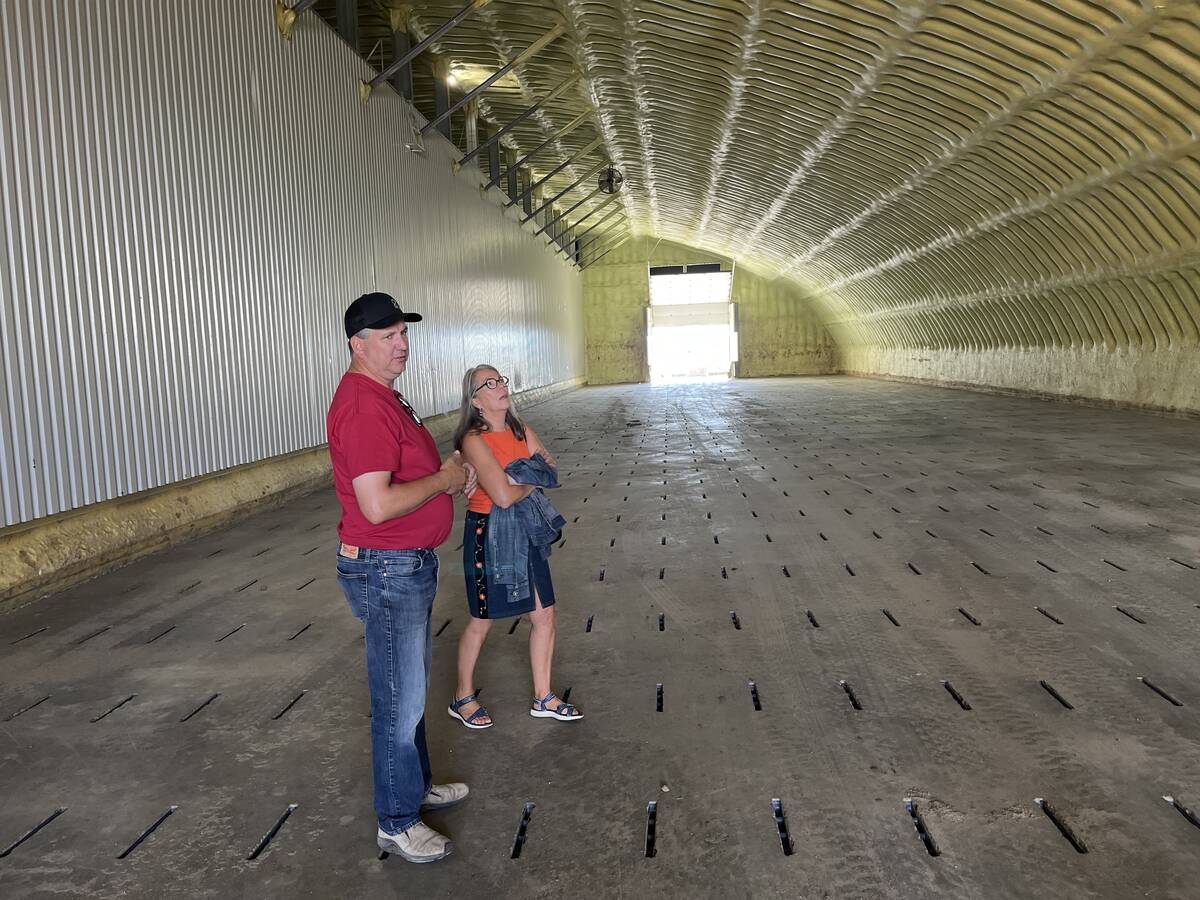Making small farms work | Stuart Barden believes he can boost grain production in a low rainfall area of Africa
EDMONTON — There is more to farming than the treadmill of getting continually larger and racing to stay financially afloat, an Australian farmer recently told a group of cutting edge farmers in Alberta.
Stuart Barden, a self-professed “super optimist,” said the race to be bigger and more efficient was beginning to wear him down.
“We were going ahead, but it was taking its toll, particularly on my encouragement,” Barden told a meeting held during FarmTech 2013.
“In Australia, sometimes we felt we were going so flat out trying to do every cutting edge thing we could. We realized there is a fork in the road and we need to go left.”
Read Also

Potato farm requires year-round management
The most recent Open Farm Day in Alberta showcased agricultural producers across the province educating the general public about the process that is required is to get food to their table.
Barden left the 31,000 acre family farm in Australia and moved his family to Kenya, where they carved a 3,000 acre farm out of scrub and hope to establish small plot research trials to show farming can be viable in the country’s low rainfall area.
“I knew there was a purpose that wasn’t limited to Australia,” he said.
“I’ve done the 30 odd thousand acres in Australia and I don’t want to go there again. That is not what we’re about,” said Barden, who traveled the world in 2009 on a Nuffield Scholarship looking at farming in low-rainfall areas of the world.
The tour led him to his farm south of Nairobi in a country that is smaller than Alberta but with a population of 43 million and 40 percent unemployment.
He said the region has the potential to grow crops consistently. It receives an average of 500 millimetres of rain a year, falling erratically and in “big lumps.”
Barden leased 3,000 acres from a 22,000-acre wildlife conservancy in 2011 and hired 220 local residents to clear 2,200 acres of bush that will become his family’s new farm.
He plans to build a small trial farm later this year to showcase agriculture for small farmers.
Barden held several field days in the first year showing how his cropping methods using zero till and controlled traffic farming preserve rainfall and improve water infiltration.
“On that soil type and environment, it won’t work without zero till. It may work without (controlled traffic farming), but it probably won’t, but the zero till is a no brainer. Without that, the system won’t work,” he said.
“Our smallholder neighbours, half the time, are starving to death. We’ve seen what that system will do and that’s not much.”
His sorghum crop ranged from three to 70 bushels per acre in the first year, depending on how much the birds ate. Changes to seeding dates may reduce the number of birds attracted to his fields.
Barden said the potential for grain production in East Africa is significant, and his goal is to show that agriculture can work in Kenya’s low-rain area.
As his main farm becomes self sufficient over the next year, Barden wants to show small crop farmers that some of the tools from his commercial farm can be used on their small plot holdings.
He expects the main farm to be commercially viable within the year, but the family still relies on equity from the Australian farm to operate the one in Kenya.
“You certainly wouldn’t go there if money was your motivation. You’d need another motivation. I don’t think that’s a big enough motivation to get you over the hurdles.”
Barden, 43, knew that if he wanted to make a change in his life, he needed to move while he was still young and full of energy and enthusiasm.
“What we’re doing in Kenya is a bit like a runaway Billy cart,” he said.
“We’re on it, there’s no getting off. We’re on the track. There is really no option but to make it work. We’ve staked a lot of our capital and drawn equity from our Australia property. We need to be profitable. We have a high motivation to succeed.”
















